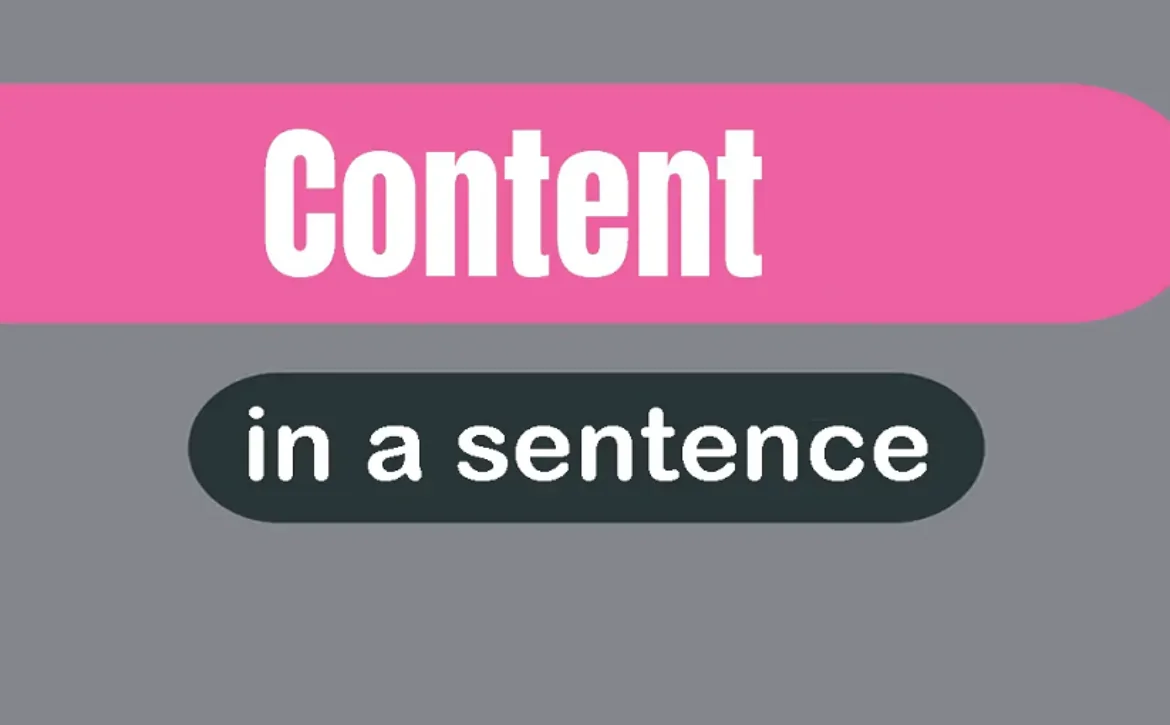Effectively Use Content in a Sentence for Strong Communication
Successful interactions in the job, in the classroom, or in interpersonal relationships all depend on effective communication. One of the most important aspects of clear communication is the ability to use content effectively within a sentence. The content in a sentence is the core message or information that the sentence conveys to the reader or listener. It includes not only the words and ideas expressed but also how those words are structured to create meaning. Whether you are writing an email, crafting an essay, or presenting a report, the way content is integrated into a sentence can significantly impact how well your message is understood.
The meaning of content in writing is more than just the literal words used; it refers to the substance or message the sentence communicates. In other words, content is the “what” of the sentence the ideas, facts, emotions, and details that the writer wants to convey. However, it’s not just about providing information. The key is to present that content in a way that is engaging, clear, and aligned with the intended audience’s needs. This requires mastering sentence structure, choosing the right words, and ensuring the content flows logically.
This article will explore how to effectively use content in a sentence for strong communication. Also delve into the meaning of content in writing, offer examples of how content appears in sentences, discuss synonyms for content, and provide strategies to craft sentences that not only communicate information but also engage and connect with the reader.
The Meaning of Content in a Sentence
Every sentence has content, and the success of communication largely depends on how clearly and concisely the content is presented. The core meaning of content in writing encompasses the substance or material provided, typically delivering the primary message of the sentence.
The role of content is essential in all forms of writing, from formal documents to creative storytelling. For instance, in a simple sentence like, “She ran quickly to the store,” the content is the act of running, the speed, and the destination.
Content Meaning in Writing
When discussing content meaning in writing, we delve deeper into how sentences are constructed to convey ideas, emotions, and information effectively. Content in writing means more than just the literal words; it also includes the intention behind those words. The content is what the reader extracts from the text the message, emotion, or information conveyed.
For example, if you write, “The sky was dark and stormy,” the content conveys the weather conditions. However, the meaning extends beyond this simple description, as it could evoke a sense of foreboding or tension. Therefore, understanding content in writing requires thinking about how individual words and sentences impact the reader’s understanding or emotional response.
The meaning of content also extends to structure. A well-organized sentence with relevant content enhances understanding, while poorly structured content may confuse or distract readers. Effective writing focuses on aligning content with purpose, audience, and context to ensure maximum clarity and engagement.
Content in a Sentence Examples
To better understand how to use content a sentence, let’s look at some examples that demonstrate different types of content and their effectiveness in communication:
- Simple Content:
- “The cat sleeps on the windowsill.”
- Explanation: This sentence contains basic content, providing straightforward information about the cat’s action and location. It’s a clear and simple example of content a sentence.
Content in a Sentence Synonym
When writing, varying your word choices can enhance your writing style and avoid repetition.
- Information: Refers to the knowledge or facts conveyed by the sentence.
- Substance: The essential meaning or material of the sentence.
- Message: The idea or information the sentence intends to communicate.
- Meaning: The interpretation or significance of the content expressed.
- Details: The specific facts or elements that make up the content of the sentence.
How to Effectively Use Content in a Sentence for Strong Communication
To effectively communicate content, it’s crucial to be clear and concise, avoid unnecessary jargon, and organize sentences logically. To make statements clearer and easier to grasp, use the active voice. Tailor your content to your audience by considering their expectations and choosing the right words and tone. Use a combination of short and complex sentences to keep the reader interested. Finally, edit and revise your writing to remove redundant information and ensure the most relevant content remains. This approach helps in delivering effective communication and keeping the reader engaged. Keep in mind that the most crucial thing is to write material that is clear and succinct.
In the end, mastering the use of content in a sentence is key to effective communication. Whether you’re writing to inform, persuade, or entertain, the content in your sentences is what drives the message. By understanding content meaning, selecting the right synonyms, and using content effectively in your sentences, you can enhance your writing skills and communicate more clearly. Remember, good content doesn’t just convey information it creates connections and engages the reader.


